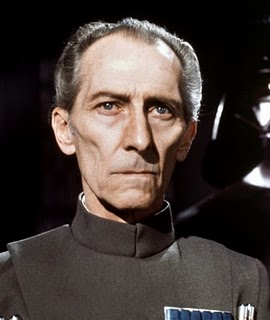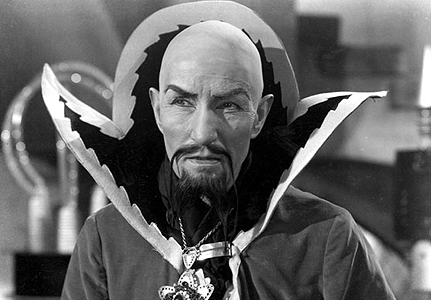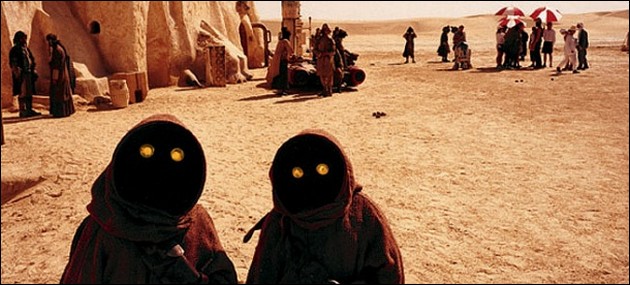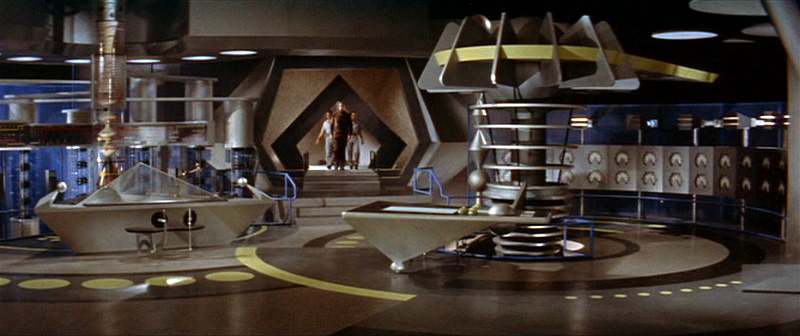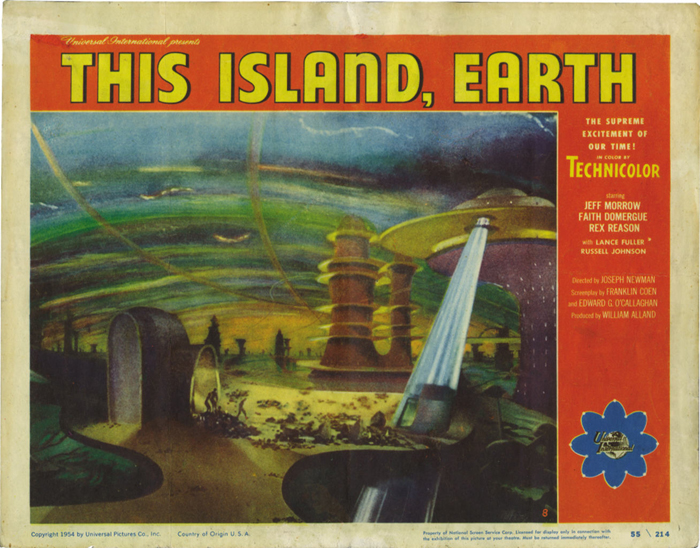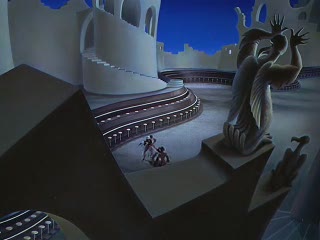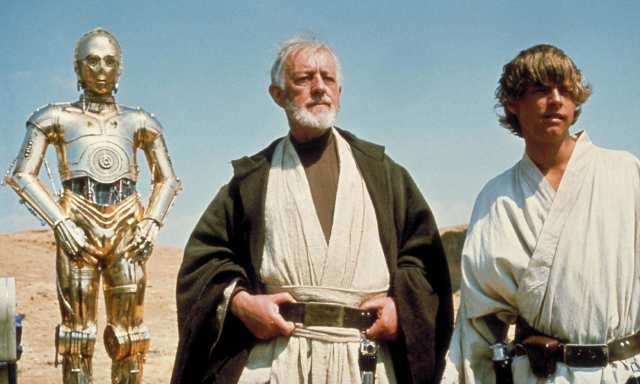From the Autumn 1977 Sight and Sound.– J.R.
“A long time ago in a galaxy far, far away . . .” reads the opening title, over vast interstellar reaches of wide-screen space. “I’ve seen the future and it works!” declares a happy teenager on his way out of the movie to a TV reporter in Los Angeles — oddly parroting what Lincoln Steffens said about Russia over fifty years ago, before Ford Motors gave the slogan a second lease on life. “Another galaxy, another time,” begins the novel’s prologue more noncommittally, carefully hedging all bets. But confusion between past and future, however useful to the tactics of George Lucas’s STAR WARS, seems almost secondary to the overriding insistence that whenever this giddy space opera is taking place, it can’t possibly be anywhere quite so disagreeable as the present.
“Rather than do some angry, socially relevant film,” Lucas has said, “I realized there was another relevance that is even more important — dreams and fantasies, getting children to believe there is more to life than garbage and killing and all that real stuff like stealing hubcaps — that you could still sit and dream about exotic lands and strange creatures.” Although garbage and killing are anything but absent from STAR WARS, and stealing hubcaps is around in spirit if not in letter, Lucas’s aspiration is easy enough to comprehend, even after the social interests of his THX 1138 and AMERICAN GRAFFITI. The disconcerting thing for a good many critics about his latest box office monolith is that it doesn’t seem to mean anything other than what it unabashedly is: a well-crafted, dehumanized update of FLASH GORDON with better production values, no ironic overtones, and a battery of special effects.
Consider the plot, which any well-behaved computer fed with the right amount of pulp could probably regurgitate: Luke Skywalker (Mark Hamill), farm youth living with uncle and aunt on the remote planet Tatooine, son of a vanquished Jedi warrior of the Old Republic — an order overturned by the evil Galactic Empire, headed by former Jedi warrior Darth Vader and the malignant Grand Moff Tarkin (Peter Cushing)— accidentally intercepts part of a sound-and- image message sent by beautiful princess Leia Organa (Carrie Fisher), a rebel senator from planet Alderaan held captive by the Empire, to Ben “Obi-Wan” Kenobi (Alec Guinness), legendary Jedi warrior now living as an outlaw in the Tatooine mountains. . . .
Following the squat robot who carries the message — R2-D2, who is usually accompanied by C-3PO, a tall vocal sidekick that mumbles like an English butler — Luke meets Kenobi, who bequeaths him his father’s light saber and, after uncle and aunt are promptly killed in an Empire raid, enlists his aid in Leia’s rescue. Meanwhile, he trains the youth in the mystical powers of the Force, a spiritual order that bestows extrasensory talents. Hiring the hardened mercenary Han Solo (Harrison Ford) and his nonhuman servant Chewbacca in the grubby Mos Eisley Spaceport to pilot them, Luke and Kenobi set off on a string of adventures, during which the latter is killed in a duel with Vader and Leia is freed. Luke then accompanies the rebel freedom fighters in an offensive against Death Star, the Empire’s seemingly impregnable battle station, and single-handedly succeeds in blowing it to attractively bubbly, sparkling, and satisfying smithereens.
All this is very clean and bloodless. Vader crunches a few audible bones; aunt and uncle are burned to black cinders in homage to THE SEARCHERS; Kenobi executes a smooth forearm amputation with his saber in the Mos Eisley saloon, and meets his own saber death by vanishing into thin air, to be absorbed within the Force; the rest is mainly fireworks and pinball machines. The smirking idealism of Luke, the sullen cynicism of Han, the shrewish irritability of Leia, the growls and whines of Chewbacca, the fussy chattering of C-3PO, and the electronic chirping of R2-D2 are all set up as “cute” objects of delighted audience ridicule. Hamill, Ford, and Fisher are made to look like surfers at an s-f masquerade ball; Cushing, the only visibly human villain, comes off as a rather improbable blend of Ming the Merciless and Jean-Luc Godard, in physiognomy as well as emotional tone. And apart from the steadfast Alec Guinness, who is respectfully allowed to assume a vaguer and more benign flatness as archetypal father figure, nearly everyone else is a monster, whether lovable (domestic) or disgusting (threatening), with the borderline between human and nonhuman often indistinguishable. (The gibbering, scavaging Jawas on Tattooine are a striking case in point: brown-robed and black-gloved, their only visible features are firefly eyes.)
The deliberate silliness of all this — like the intricate silliness that has always been part of Disney’s stock-in-trade — leaves the audience free to react from a safe voyeuristic distance, enjoying “pure” sensations that are unencumbered by any moral or emotional investments. Indeed, the cursory treatment of “romantic interest” (with Leia still prevaricating at the end between both male leads via bored winks) leaves the way open for a very different sort of titillation. In the exhilarating space battles, with their odorless ecstasies of annihilation, and the various space-gun skirmishes, with their fancy dismemberings and eliminations, this essentially becomes an occasion for sexual release devoid of any partner. Like the remote-control TV channel selectors that children love to play with, and the mechanical shooting games found in arcades, STAR WARS offers solitary, narcissistic pleasures more than communal or romantic myths to keep its audience cheering.
Admittedly, Westerns, samurai sagas, Arthurian legends, Disney bestiaries, DeMille spectaculars, and World War II epics have been borrowed from as liberally as earlier s-f. The climactic Death Star attack is modeled directly after a compilation of air battle clips from over fifty war films, and even the final procession of Luke, Han, and Chewbacca down a long aisle to receive their medals has been identified by Arthur Lubow as a conscious “restaging of the march of Hitler, Himmler and Lutze to the Nuremberg monument” in TRIUMPH OF THE WILL. But the point of this approach is to make all the myths it plunders equally trivial and “usable” as nostalgic plot fodder, even if most of the emotions are absent. One would probably have to go back to the 40s, as Lucas did, to find such a guiltless celebration of unlimited warfare, but one needs to escape history entirely in order to set up oppositions of good and bad — reflected in black-and-white patternings of costume and decor — as unambiguous. On the level of racial ideology, this knowing mindlessness is even shrewder. While the original 1936 FLASH GORDON serial could allude to the “Yellow Peril” directly through Ming the Merciless without any sort of embarrassment, the styling of the Jawas as stingy Jewish merchants — “Munchkin Shylocks,” in Richard Corliss’s apt phrase — is much more oblique and subtle; one might even have to see the relationship of “Jawa” to the Hebrew “Yaweh” in order to catch the clue.
Following the fashion set by 2001 in some aspects of its design — robots programmed to be more “personable” than any of the actors, in-depth trajectories of slablike missiles entering the lower foreground of shots and sliding away diagonally (including the three long paragraphs preceding the action) — STAR WARS postulates itself as the anti-2001 in nearly every other respect, and not only because fantasy is systematically substituted for technology. If Kubrick’s central subject was intelligence, Lucas’s is predicated on blind instinct: Luke’s initiation into the Force, like the spectator’s into the film, is basically a matter of surrendering to conditioned reflexes and letting the cosmic mise en scène take over. And where 2001’s sense of spectacle was contemplative, STAR WARS’ is near-Pavlovian in its careful measurements of give-and-take, making it impossible on a practical level to isolate many of the special effects from the editing.
Working on the assumption that the enchantment of any creature, landscape, gadget, or set decreases in ratio to the length of time it’s on the screen — a withholding premise already evident in the Krel episodes of FORBIDDEN PLANET and the brief, last-minute glimpses of a perishing city in THIS ISLAND EARTH — the movie is constructed like a teasing comic strip storyboard. Nothing incidental or scenic is allowed to retard the rapidly paced narrative, but is merely packed along en route (like the twin moons of Tatooine, or the binoculars Luke uses while scouting for R2-D2). A rare exception is made for diverse beasties in the inventive Mos Eisley Western saloon sequence, where spectacle momentarily triumphs over event.
Less imaginative in its otherworldly architecture than THE 5000 FINGERS OF DR. T — an all but forgotten Stanley Kramer production of the 50s, which, unlike STAR WARS, incorporated an escape from an unbearable present in its plot — Lucas’s smorgasbord of styles is often more a matter of quantity than quality, as in the dense profusion of red laser beams that periodically streak across the screen. An effort is made, however, to make some of the locations (the scrapheap inside the Jawas’ Sandcrawler, Mos Eisley, Han’s pirate starship) untidy enough to seem lived in. Sound, including the nearly continuous music, serves the elliptical pacing throughout: intimations of Tarkin’s imminent torture of Leia are limited to a brief shot of a syringe and the loud sliding shut of a door; the beast that pulls Luke down into the slimy muck of a shrinking garbage bin is more heard than seen; and the whistling sounds of the attacking rebel starships work a lot better as drama than as science.
For a film so devoid of any dialectic, one is tempted to speculate what its absolute antithesis might be. Would the recent films of Grand Moff Godard — low-budget, experimental, pleasurable to the mind rather than to the reflexes — be far off the mark? Yet if any parallel can be found between the film world and Lucas’s Manichaean universe, it is the blitzkrieg of media fanfare celebrating STAR WARS and its countless spinoff industries — not the trifling efforts to get Godard’s films seen or acknowledged anywhere — that corresponds to the Empire’s efforts to snuff out every form of resistance. And the consortium that is currently contriving to inundate everyone’s mind with a few profitable monoliths and assign the rebel forces of cinema to cheerful oblivion is not merely a group of big business men, but a movement composed of critics, editors, and media programmers and broadcasters — all of whom collaborate with other consumers in making STAR WARS (which is already threatening to topple JAWS as the all-time moneymaker) more than a simple movie, but an appreciable dent in the landscape.
What has any of this to do with esoteric items like NUMÉRO DEUX and ICI ET AILLEURS, whose more fragile transactions might as well be occurring on another planet? Simply the fact that both are concerned with advancing knowledge in the here and now, and this is generally taken to be such a distasteful activity that even defenders of such films generally feel compelled to describe their experiences as ones of necessary “unpleasure.” The mere title of an earlier Godard film, LE GAI SAVOIR, already sounds anachronistic within the present climate. Who but a sick person, runs the implied argument, could take pleasure in a documentary shot of Palestinian soldiers in ICI ET AILLEURS, followed by a title saying that “Nearly all these actors are dead”? Better to take a calculated step backward in knowledge, sever communal and historical ties, hoot at heroes and villains alike, blow up invisible, imaginary enemies from a safe video distance, and enjoy it all as good, clean, healthy fun — marking time until the next real opportunities for automatic, xenophobic destruction arrive. This is the “relevance” of STAR WARS that a Lucas finds “more important”; and several million filmgoers are heartily agreeing.
— Sight and Sound, Autumn 1977



